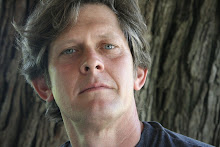
Not enough water and you dry up; too much, you drown.
A few days ago I witnessed a startling sight. Out on the road in a thunderous rainstorm, I came upon a river of water rushing across the road in front of me. Directly ahead, a car was stalled out headlight- deep in the current.
Proving I’m not a natural photographer, I didn’t reach for my camera; I hopped a curb and got the heck out of there.
Mother Nature was severe that day, but we’ve had rains like that before. Why then, when the city invests a good portion of its infrastructure budget each year in the maintenance and expansion of an underground storm sewer system, would this particular rainstorm result in an instant raging torrent over one of the city’s most traveled thoroughfares?
It has to do with a simple principle: hard surfaces – such as parking lots, roads, and roofs – repel water hastening the speed of storm water runoff; a natural or landscaped surface absorbs much of the water and slows the velocity of any excess.
In a related story, that very same street was recently “improved.” The roadway was widened, landscaping was removed, and large swaths of planted median were paved over.
In the absence of adequate green space, too much water rushed the system all at once and a tipping point was reached. For a brief moment, everything was out of balance and the system was overwhelmed.
The conventional solution would be to install new and bigger pipes to carry the water “away.” Tearing up streets to install larger storm sewers is an expensive proposition, and after a few more parking lots go in nearby, it will be time to enlarge the system again as drainageways must be sized for maximum capacity.
The sustainable (and considerably less expensive) solution involves integrating green space into the fabric of the community. Conscious placement of parks, lawns, landscaped buffers, and natural areas around developed space creates a natural dynamic whereby water migrates into the system at a much slower rate avoiding that sudden rush and transcending the need to enlarge the system.
Green roofs and porous pavement serve the same function.
Green space is part of the natural infrastructure of a city. It’s how nature manages a sudden rainstorm without the drama or expense.
Greening the city also means cleaner air, cooler summers, and a more beautiful environment in which to live, work, and play. Imagine that blistering parking lot in the middle of summer transformed with a shaded canopy of green foliage and garden space giving expanded meaning to the word park.
In an age where businesses and governments are strapped for cash, sustainable solutions deliver results naturally. After all, plant life - ever energy-efficient - runs on free solar power.
Conventional thinking, on the other hand, may be all washed up.





No comments:
Post a Comment